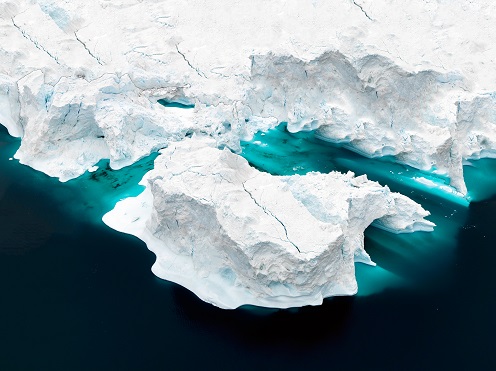New center at the University of Copenhagen to predict climate tipping points
Current climate models are unable to predict sudden and violent changes to climate, known as tipping points. This is a phenomenon that researchers fear more and more, and that the United Nations Intergovernmental Panel on Climate Change seeks answers to. As such, the University of Copenhagen is opening a new research center to, among other things, develop better climate models which more accurately predict the risk of climate system tipping points.

Global warming may reach a threshold in the very near future, one that triggers a sudden, violent shift in the climate system, one that catalyzes a domino effect of dramatic new climatic changes via feedback mechanisms. In other words, Earth’s climate could run amok in a self-perpetuating and spiraling trend that is impossible to slow or reverse.
These phenomena are called "tipping points" because they describe the tipping of climate from one stable state to another. The most sophisticated of current climate models are unable to predict tipping points. No one knows whether these tipping points will be triggered by a temperature rise of 2 or 1.5˚C degrees, or somewhere else along the scale.
"Researchers are increasingly concerned by tipping points - points of no return where climate will change dramatically regardless of our actions. A point where we could suck all of the CO2 out of the atmosphere and still be headed into the abyss. Our knowledge about this phenomenon is too limited.
It is crucial for us to better inform the world’s decision makers. As things stand now, politicians are gearing up to respond to a gradual and steady rise of up to two degrees Celsius," according to Peter Ditlevsen, a physicist and climate researcher at the Niels Bohr Institute and head of the new TiPES research center (Tipping Points in the Earth System).
When the Amazon dries
Peter Ditlevsen will head a large collaborative effort among eighteen European research institutions. Over the next four years, the research consortium will calculate tipping point thresholds, identify the climate system components most susceptible to tipping and develop new climate models.
The consortium has a broad composition that includes climate model creators, mathematicians, geophysicists and even political decision-making experts. They have just signed a contract with the European Union for 65 million kroner in funding from the Horizon 2020 programme.
A familiar example of a potential tipping point is the point at which the melting of the Greenlandic ice sheet can no longer be halted. Such a point would catalyze a chain reaction of elevated seal levels, flooding and changed ocean circulation patterns.
Another tipping point feared by scientists is that increasing drought will cause the Amazon rainforest to dry out, so that instead of absorbing huge amounts of CO2 and creating atmospheric oxygen, the forest would become a releaser of CO2.
"We don’t know how much the temperature needs to rise before a tipping point is reached. For example, we just don’t know what the limit is before Greenland's ice sheet disappears permanently. It may have already been reached. Therefore, there is an urgency to learn more about the mechanisms of this type of violent climate change and develop improved climate models. This is precisely what we will be doing," says Peter Ditlevsen.
Climate models not quite there
The large-scale climate models used today are only geared to calculate climate based on the past 100 years. They work from stable, linear climate developments. While these models have grown to incorporate more and more factors, and have improved significantly over the past 30 years, they still don’t reflect reality when it comes to large, non-linear changes or tipping points.
Several prehistoric examples of tipping points exist, including a 10-15˚C average temperature increase over a 10-year span during the Ice Age. The periods preceding these tipping points resembled the even climate development we are now experiencing. As such, researchers will investigate past climate change using ice core samples and other methods.
Topics
Related News
Contact
Peter Ditlevsen
Physicist and climate researcher
Niels Bohr Institute
+45 35 32 06 03
pditlev@nbi.ku.dk
Maria Hornbek
Journalist
SCIENCE Communication
+45 22 95 42 83
maho@science.ku.dk
